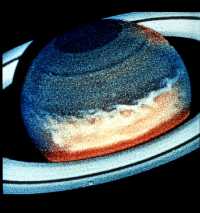This is an image of Saturn in falsecolor. The shadow of Saturn can be seen against the rings in the background.
Click on image for full size
NASA/Hubble Space Telescope
Saturn Clouds, overview
This image of Saturn makes use of false color to emphasize the cloud pattern. The clouds form in bands which move across the disk of Saturn. The banded pattern of clouds, or
stripes, is similar to those found on all the giant planets, particularly in
Jupiter's belts and zones. The similarity among all the giant planets, even
Uranus, suggests that there must be a common mechanism for the creation of that pattern.
Cloud shapes of Saturn include eddy shapes, white ovals, and brown ovals, just like on Jupiter. A row of swirling eddies can be seen in the very middle of this image in white.
There are three clouddecks on Saturn, and each one is composed of different molecules. There is a clouddeck of ammonia clouds, a clouddeck of ammonia hydrosulfide clouds, and a clouddeck of water clouds (H2O). These clouds are found in the troposphere of Saturn.
Hazes of smog on Saturn are to be found at very high altitudes above the clouds of Saturn.
You might also be interested in:
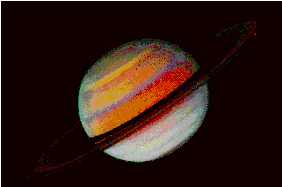
The striped cloud bands on Saturn, like Jupiter, are divided into belts and zones. In a belt, the wind flows very strongly in one direction only. In a zone, the wind flows very strongly in exactly the
...more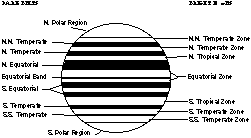
The striped cloud bands on Jupiter are certainly not as straight as they appear to be in this picture! The picture shows that the striped pattern is divided into belts and zones, which are labeled. In
...more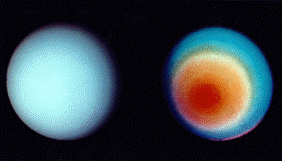
The striped cloud bands on Uranus, like Jupiter, are divided into belts and zones. On Uranus the belts and zones are hard to distinquish. The left picture shows the north pole of Uranus. In this picture
...more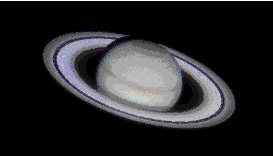
The dramatic appearance of Saturn stems mainly from the spectacular rings. What is visible of the atmosphere is much less dramatic. The clouds of Saturn are much less colorful than those of Jupiter. This
...more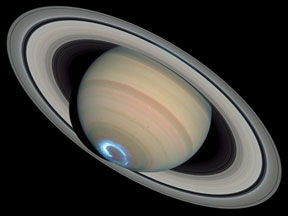
Have you ever seen the Southern or Northern Lights? Did you know that Earth isn't the only planet that puts on these beautiful light shows, also known as the "aurora"? Auroral displays have also been observed
...more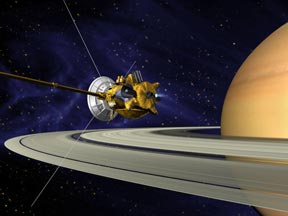
The Cassini spacecraft will arrive at Saturn on June 30, 2004. Cassini's engine will make a critical 96-minute burn starting at 7:36 p.m. Pacific Time (10:36 p.m. EDT) on June 30. The burn will slow Cassini
...more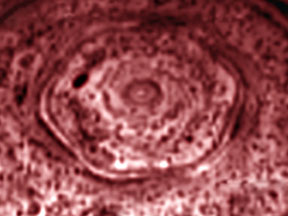
Astronomers have discovered a bizarre, hexagon-shaped feature in the clouds of Saturn near the planet's North Pole. The feature was first seen in images returned by the Voyager spacecraft in the 1980s,
...more


